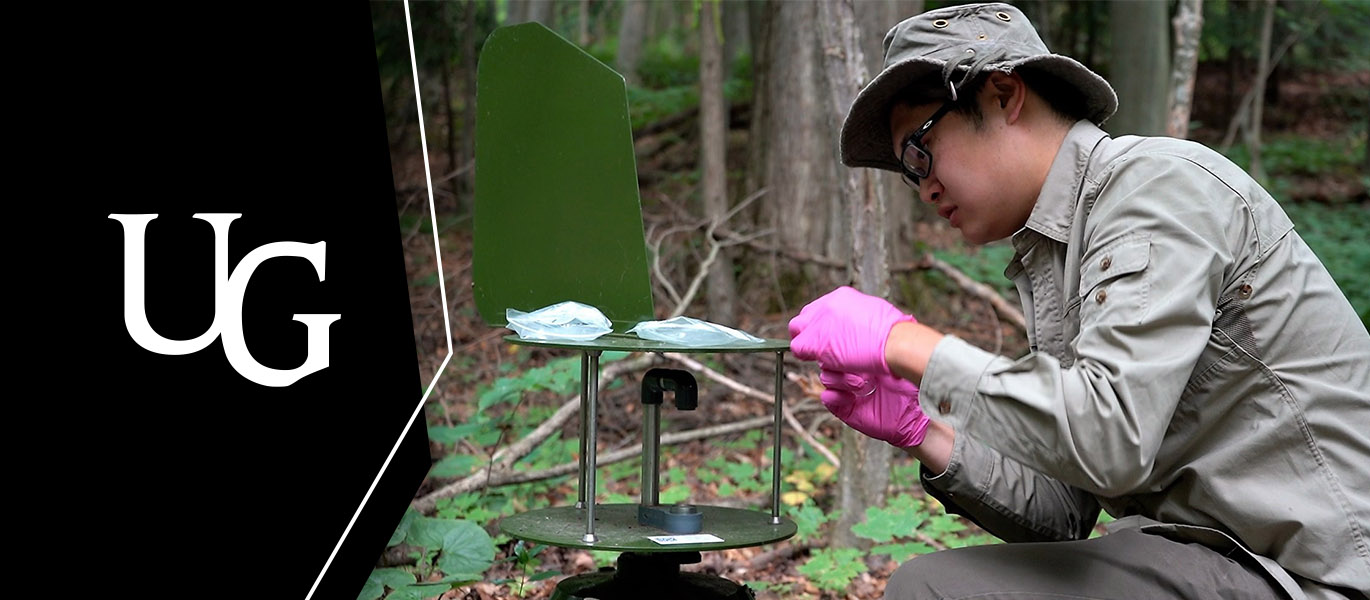Looking to stem global biodiversity loss, European scientists have launched a new research alliance to use DNA barcoding and related technologies developed at the University of Guelph.
The Biodiversity Genomics Europe (BGE) consortium predicts that its work will have revolutionary impacts on biodiversity science, akin to those of the Human Genome Project on medicine and health.

The BGE was launched Sept. 28 with the equivalent of $28 million over three years from Horizon Europe, a major program supported by the European Research Commission and the U.K. and Swiss governments.
The consortium brings together European researchers and institutions who use DNA barcoding, environmental DNA and metabarcoding to assess and monitor biodiversity. For example, the BGE will use these approaches to probe pollinator declines and evaluate changes in ecosystem structure.
Those issues have gained increasing international attention, reflected in the EU’s Biodiversity Strategy for 2030 and commitments under the European Green Deal.
European researchers have made significant contributions to the International Barcode of Life (iBOL) consortium and its BIOSCAN research program. Coordinated by U of G’s Centre for Biodiversity Genomics (CBG), these initiatives use DNA-based technologies to inventory biodiversity worldwide.
“Although European researchers have been key contributors to iBOL since its inception in 2010, the importance of BGE cannot be overstated,” said CBG’s director Dr. Paul Hebert, a professor in the College of Biological Science and the iBOL chair.
“It will strengthen cohesion among organizations, establish new analytical facilities and generate data on a continental scale. It is, quite simply, a hugely important development in the effort to protect global biodiversity,”
Consortium to lend weight to global DNA barcoding, species inventory efforts
Launched in 2019, the $180-million BIOSCAN program involves researchers, academic organizations and natural history museums in discovering multicellular species and tracking their interactions and dynamics.
“The Centre for Biodiversity Genomics has provided global leadership in the massive-scale coordinated use of DNA sequences to tell the world’s species apart, and its involvement in the Biodiversity Genomics Europe consortium is of enormous importance,” said Prof. Pete Hollingsworth, BGE’s director and director of science at the Royal Botanic Garden Edinburgh.
“The exchange of knowledge, ideas and technology within these major biodiversity genomics initiatives will be of immense value in upscaling the deployment of genomic technologies in Europe for biodiversity characterization, conservation and biomonitoring.”
The iBOL consortium formed in 2010 with two goals – to complete the inventory of multicellular life and establish a global surveillance system before mid-century. Hebert said organizers knew that meeting those goals would require unprecedented investments in biodiversity science.
“We also knew this billion-dollar research program would require collaboration on a grand scale,” he said. “At the start, we questioned if we could mobilize either the funding or the research alliance. However, the rise of BGE makes it increasingly certain that we are going to realize those grand goals.”
Contact:
Hannah James, communications manager
Centre for Biodiversity Genomics
hjames@uoguelph.ca
